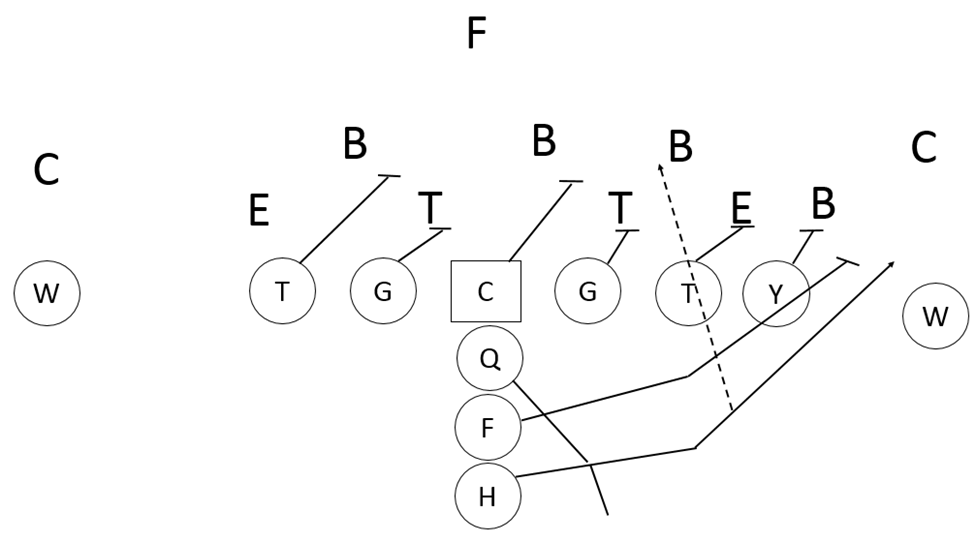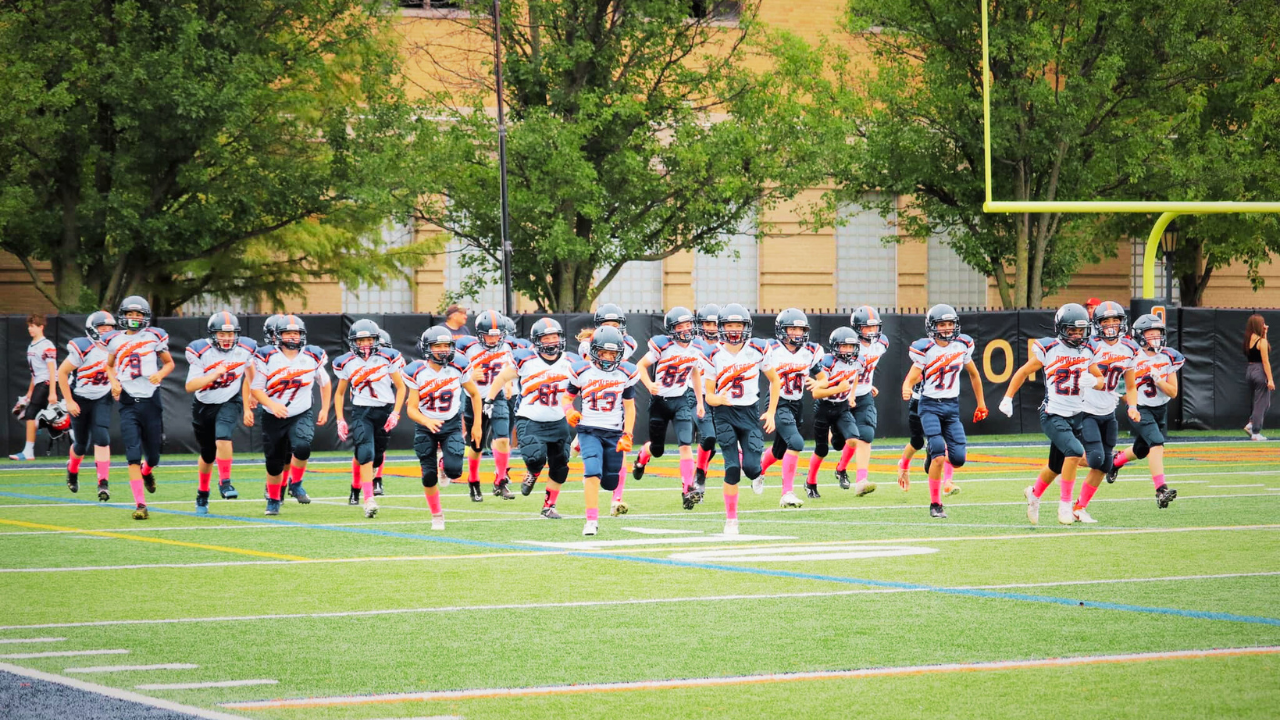Maximizing the Outside Zone Blocking Scheme

The Outside Zone blocking scheme is one of the most universal schemes in football. Behind the Inside Zone it is the second most popular scheme at the professional and college level. The best part about the Outside Zone scheme is that it can be used in a multitude of different ways to attack the defense. A primary goal of almost all offenses is to get the ball to a speedy player in space. The Outside Zone allows an offense to do this in a variety of different ways.
Maximizing the Outside Zone Blocking Scheme
One of the most common ways the Outside Zone has been used is from Under Center with the Stretch play. This concept was made famous by the Denver Broncos and their legendary offensive line coach Alex Gibbs. The concept is that the Running Back will be coming downhill and taking a handoff deep in the backfield. He can then read the block of his Playside Tackle to determine if he will press the ball outside or make a single cut back to the Inside. This can be run from a variety of different formations and sets which makes it particularly difficult to defend.
One advantage of running this play from Under Center is the Play Action potential it opens up. By having the Running Back coming downhill the defenders are forced to react or risk being beaten to the edge. Peyton Manning was a true master of this where he would sell the fake so well that the defenders would come downhill to stop the run only to see Marvin Harrison or Reggie Wayne going streaking by them.
One of the toughest parts of running the Stretch play is in coaching the Running Back. It is critical that he is able to read the Tackle. If the Tackle is able to seal his man then the Running Back is free to get the ball to the alley and attack downhill. If the Tackle is unable to seal his man the Running Back must plant with his playside foot and cut vertically upfield. This can be particularly difficult for younger running backs as they hear the Stretch play called and want to run the ball to the outside no matter what. They must be taught through practice and game reps to get a feel for when the Tackle does not have his man sealed so they can turn it upfield to gain yards.

Another common way to utilize the Outside Zone blocking scheme is to get the ball to the running back out of the backfield. In this instance the Running Back will line up next to the Quarterback opposite of the play call. When the ball is snapped the Quarterback will take the snap and step directly back as the Running Back come across his face.
The Running Back is still making the same read on the Tackle. Many Running Backs can find this to be a more difficult read because they are moving directly sideways which makes it difficult for them to cut and get upfield. Again it’s important to drill this technique so it becomes second nature to the Running Backs.
Some teams will have the Quarterback read the backside Defensive End on this play. When the Quarterback is reading the end he is checking to see if he can run it for four or more yards opposite of the play call. Many teams have moved away from this because it’s very rare for the backside Defensive End to be able to run down the Running Back.

One of the more popular ways to use the Outside Zone blocking scheme is by utilizing the Jet Motion to give the ball to a fast player running at full speed. This can be a great way to get the ball on the edge and utilize a WR who might not be getting a lot of passes thrown to him.
There are a variety of different coaching points that must be mastered but one of the key things is that the runner gets the ball at as close to full speed as possible. This can only be accomplished through practice with the backs running at full speed.
One way to handle the handoff to the Jet man is by having the QB drop the ball down to him. By doing this a couple of different things are accomplished. The biggest one is that if the ball is dropped by the runner it is considered a forward pass and the play is dead. This helps eliminate some concerns especially if you are pulling a fast player over from defense to run the play.
The other major advantage is that some players feel like it allows them to run faster. While I don’t really believe this is completely true, I am a full believer in the power of the placebo effect. I believe that a player who thinks he can run fast will beat a player who thinks he is going to be running slow. As a result I normally give the players the option if they would like to get the ball dropped down to them.
Regardless of how the handoff takes places the Jet man will be getting the ball and stretching the edge of the field. Due to the speed the runner is moving at he will not be reading the playside tackle and is automatically trying to get to the edge. The added speed of the runner makes it more likely that the Tackle will be able to make the block but many teams will use the Running Back to seal the edge to guarantee that the ball carrier can get to the alley.
(See Also) Inside Zone Wham Series
(See Also) Zone Running Plays










